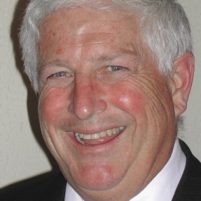California public pensions are not bullet proof
July 7, 2017
By MIKE BROWN
One of the paradoxes of current California state and local politics is the continuing support by public employee unions of left progressive candidates and their policies. This emerging and expansive Democratic Party faction has recently been restyled and consolidated nationally as the Alternative Left Progressives (in honor of Bernie Sanders) and locally as the SLO County Progressives.
Historic support of the progressive left by unions through campaign contributions, candidate endorsements and boots on the ground campaigning is certainly understandable. After all, the progressives have delivered decades of exponentially compounding “cost of living” raises and guaranteed retirement formulae, which often grace career employees with pensions that are equal to their highest lifetime salaries.
Until recently, the current employees working towards retirement and the current retirees, and their survivors, have believed that it is legally impossible for either the various pension systems (CALPERS, UC Retirement System, County 1937 Act, And CALSTRS for teachers) or the funding jurisdictions (the state, public university systems, counties, cities, public school systems, and thousands of special districts) to abridge or otherwise modify benefit levels once promised.
Recent efforts by the City of San Jose and Orange County to change promised benefit levels for currently working and as yet unretired employees survived legal challenges. However, both the city and the county then had to partially abandon the efforts because critically needed employees such as police officers simply quit and moved to other jurisdictions that have not imposed benefit reductions.
This is possible because the various pension systems and jurisdictions within California have adopted reciprocity provisions that transfer the accumulated years of service and blend the benefit levels, if in fact they are different, from the sending to the receiving jurisdiction.
For example, an acquaintance of ours, who is an outstanding executive manager, has worked for a city, two counties, and several public universities over his career. He has been actively recruited by the various entities and now serves in a very high level position with direct compensation approaching $300,000 per year. He could end up with 35 years of continuous public service (not counting the military, in which he served in a combat branch and which is not counted in his years). In any case, 35 years times 2.5 percent of final average salary of $290,000 equals $253,000. Since he has accumulated sufficient quarters, he will also be eligible for Social Security.
In this environment, public employees have had little reason to support reform and have only recently acquiesced, in some cases, to adoption of two-tier systems under which future hires will receive lower benefits and will contribute more to the cost than their currently serving colleagues.
Not so fast
Recently and with increasing frequency, retirees and current employees ask me about the risks to their pensions. They prudently sense danger. These informal inquiries are usually framed in terms of the fear that their former or current employer will become so hard pressed that it will discover or engineer a legal way to renege on retirement payments or previously promised benefits. Barring a significant and protracted public emergency, the chance of wide spread retroactive legal changes still appear somewhat remote, but not impossible.
The more likely scenario is the potential collapse of the pension funds and/or collapse (bankruptcy) of the funding jurisdictions. Unfunded pension debt; unfunded deferred maintenance on roads, bridges, prisons, university buildings, park facilities, aqueducts, dams, water and sewer systems and existing debt that has been already issued by all the government jurisdictions is approaching $1 trillion dollars.
On top of this, the Alternative Left Progressives, including the SLO County Progressives, are officially calling for single payer medical care, which will require hundreds of billions of dollars in new taxes. Similarly, they are calling for free public university education, which would require further tens of billions. Moreover, they are advocating that these benefits be provided to any resident of California regardless of citizenship.
In other words, the current retirees are not safe. The current working employees are certainly not safe. If the state, local governments, school districts, and universities flounder, the public could simply contract with private sector alternatives. For example, Cal Poly receives only about 33 percent of its revenue from the state. Most consists of tuition. In a pinch, it could evolve into a private university.
As things begin to collapse, voters will reject tax increase bailouts. You would think that these retirees and future retirees would wake up and endorse candidates and officials who support growing the economy, more private sector jobs, and vigorous private investment, all of which would make it easier to meet the existing pension obligations.
You would also think they would question the SLO Progressive platform and ask its officers and committee chairs how they will protect their pensions, deal with the existing debt structure, add a half billion in new programs, and not annihilate the private sector and drive it out of state. They might also inquire as to how they plan to work these policies while at the same time banning oil and gas production and development; socializing the stockholder owned utilities; banning nuclear energy; and imposing project killing fees, taxes, and regulatory hurdles on new home and commercial development.
What current retirees and current vested working public employees need to understand is that all boats rise with a vigorous and growing economy. The historically accumulated and continually growing avalanche of state and local regulations, fees, and taxes undermine investment, job creation, and the generation of state income tax, corporate income tax, sales taxes, and property taxes.
This reduction in resources will in turn increase the pressure for the state, cities, counties, school districts, and special districts to find ways around the pension cost dilemma. Voter initiatives and legal remedies will be attempted. In the face of this growing and necessary pressure, if public services and education are to be preserved, it would be prudent for public employees and public retirees to reject the neo-progressive status quo and to elect officials who will ease the problem by enabling a better economy and a naturally growing revenue base.
Mike Brown is the Government Affairs Director of the Coalition of Labor Agriculture and Business (COLAB) of San Luis Obispo County. He had a 42-year career as a city manager and county executive officer in four states including California. He can be reached at mike@colabslo.org.







The comments below represent the opinion of the writer and do not represent the views or policies of CalCoastNews.com. Please address the Policies, events and arguments, not the person. Constructive debate is good; mockery, taunting, and name calling is not. Comment Guidelines